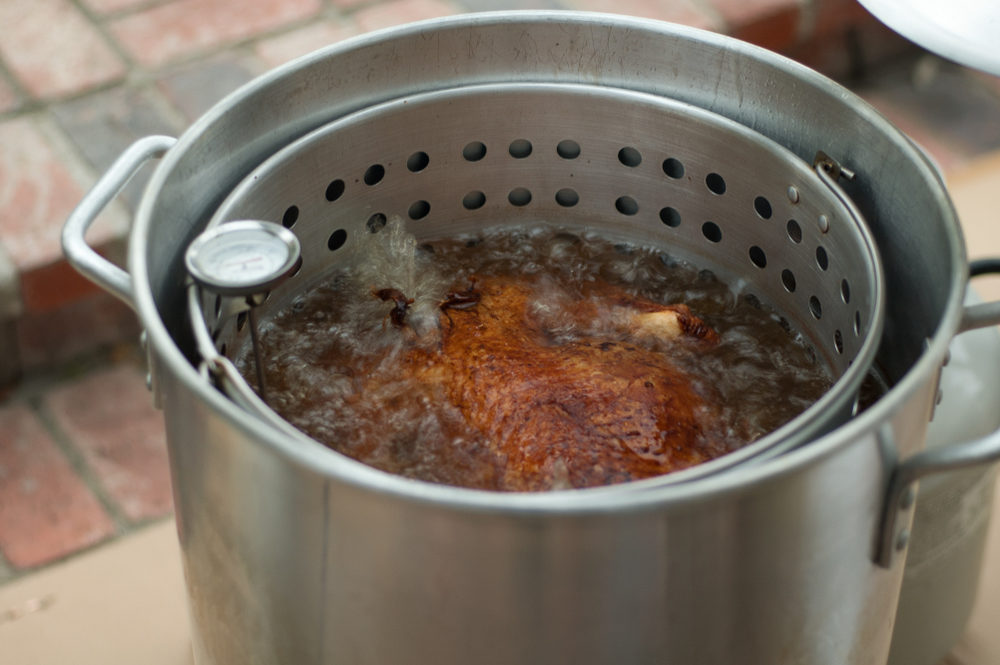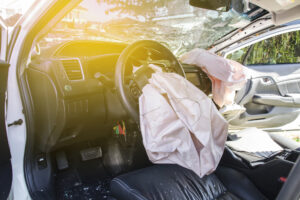
Countless Americans now consider fried turkey a part of their Thanksgiving celebration. Of course, with New Orleans being a mecca for delicious cuisine, it is no surprise many foodies trace the rise in popularity of fried turkey to a French Quarter restaurateur.
In 1984, the deep-fried turkey trend as a Thanksgiving centerpiece took off across America. Dale Curry, the long-time Times-Picayune food editor, wrote an article about how Jim Chehardy, the then-general manager of the Landmark Hotel, deep fried a turkey. In the article, Curry detailed how Chehardy slathered the bird inside and out in garlic, infusing it with a crab boil, marinating it overnight, and finally, lowering the turkey, by rope, into a vat of boiling peanut oil.
Unfortunately, as quickly as home cooks read the article and attempted Chehardy’s turkey frying technique, emergency personnel began seeing an increase in house fires.
In 2004, when Curry announced she was retiring, she recalled her Thanksgiving food article about fried turkey.
“‘Deep Fry for the Big Bird’ was the headline on my first Thanksgiving food story 20 years ago,’’ she said. “By nightfall, I had become known as the first food editor to burn down two houses.”
Dangers of Deep Frying a Turkey & Safety Tips to Follow
While deep-fried turkeys are more commonplace, there continue to be too many holiday disasters caused by home cooks and turkey frying mishaps. Just by design, deep frying, with its large container heated by an element of substantial power, has the potential for disaster.
Each year fire departments across the country respond to hundreds of house fires involving deep fryers. On average, this type of cooking results in the destruction of almost 1,000 homes and more than $15 million in property damage. And Thanksgiving is by far the leading day for home-cooking fires.
The dangers of deep frying a turkey should be considered when deciding how to cook your Thanksgiving meal. Whenever the number of people at a gathering increases, so too do the odds of an injury occurring. The odds increase even further when the gathering is near a deep frying device. The cook and the guests can be exposed to splattering hot oil, and the large equipment can spill over, sending hot oil and sparks everywhere. Even if a spill doesn’t occur, it can spontaneously ignite if the oil heats too high.
While many experts, including the National Fire Protection Association (NFPA), discourage cooking a fried turkey at home, those who decide to use the deep-frying method must do so with equal parts of preparedness, caution, and attention.
Remember to thaw the bird: Because of its size, a frozen turkey could take several days to thaw. A completely thawed turkey is more crucial than ever when the cook is deep frying it. This is because as ice thaws, the water interacts with the oil and can cause splatters and sparks, resulting in either a direct burn to someone close by or even a fire (for this reason, you should also make sure not to use water-based marinade when preparing the turkey).
Location, location, location: The U.S. Fire Administration recommends always frying the turkey outside, at least ten feet from your house. Also, ensure the created cooking station is on a level surface away from flammable objects.
Avoid frying on wooden decks, which could catch fire, and when using propane, leave two feet between the tank and the burner.
Take time to measure: As a turkey is lowered into the cooking pot, an overflow of hot oil can occur. Therefore it is essential, before cooking begins, to determine how much oil is needed. To do this, place the turkey in the empty pot and add water until it covers the top of the turkey by about half an inch. Then remove the turkey, allowing the water from the turkey to drain into the pot. Mark the water line with a food-safe marker. When it’s time to cook, fill the pot with oil to that mark. After submerging the turkey, the final oil level should be at least 3 to 5 inches below the top of the cooking pot.
Remember the essentials: Before cooking, make sure you have what you need to handle the hot equipment and protect yourself from burns, including plenty of protective mitts and pot holders to operate hot equipment.
In deep frying a turkey, the ideal temperature for the cooking oil is 350 degrees Fahrenheit. Therefore, your turkey fryer needs to have a thermostat to monitor the temperature of the oil or use a kitchen thermometer that attaches to the side of the pot. Cooking oil is combustible, and the vapors can ignite if heated above the correct temperature.
Better safe than sorry: While following all these tips should help guide you to a safe and celebratory Thanksgiving day, it is still important to plan for the worst-case scenario. Make sure to keep a home fire extinguisher on hand. If an accident does occur, and you believe someone is injured or you see shooting flames that are not under control, call 911 immediately.
At Herman, Katz, Gisleson & Cain, we want to wish everyone a safe and happy Thanksgiving. We also want to remind you that if you have used reasonable caution while using cooking equipment, including deep fryers, and were still injured due to someone else’s negligence, you may be entitled to compensation for your injuries. Feel free to contact us online or call 504-581-4892 to learn more about your legal rights.

Jed Cain is a partner with Herman, Herman & Katz, LLC. He has dedicated his career to representing injured folks and their families.














Comments for this article are closed.